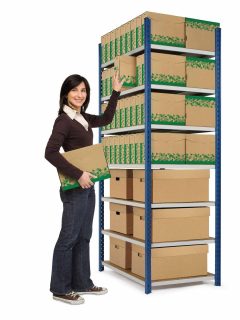Used packaging is no longer just waste. At a time of rising material prices and pressure for sustainability, they are becoming a smart tool to save both nature and the corporate budget. When does it make sense to reuse them, what does the legislation say and how to communicate this practice to customers correctly? Here’s an overview of practical tips to help you give packaging a second life – without compromising on quality.
✅ When does reuse make sense?
Used packaging has the greatest benefit where hygiene or safety requirements are not a top priority, and at the same time:
-
they are not damaged, soiled or contaminated,
-
they have been previously used, for example, in internal logistics,
-
they are standardised packaging materials – cardboard boxes, plastic boxes, wooden pallets, paper or bubble wrap fillers.
For example:
-
Cardboard boxes can be reused for transporting less sensitive or durable goods.
-
Filling materials (paper, cardboard wool, air cushions) will serve for protection in internal packaging.
-
Eurocrates or shipping boxes are ideal for repeated circulation between warehouses or suppliers.
From both a sustainability and cost perspective, it pays to ‘keep the packaging in circulation’ as much as possible – with the right quality control system, of course.
What to look out for – hygiene, customer perception and quality
Used packaging cannot be used in all circumstances. Particular attention must be paid to:
-
Hygienic safety – packaging for food, cosmetics, pharmaceuticals or children’s goods must ensure complete cleanliness and ideally also be certified according to applicable standards (e.g. HACCP, GMP).
-
Customer confidence – if the reused packaging goes directly to the end customer, we recommend adding a simple explanation:
“We used second-hand packaging to deliver this shipment – thank you for helping us to save nature.” -
Aesthetic impression – even used packaging should look clean, solid and professional.
-
Labelling – ideally remove original labels, other company logos or safety symbols that could confuse the customer.
Tips for effective reuse and recycling
Implementing a packaging reuse system doesn’t have to be complicated. Many companies achieve excellent results with simple internal measures:
-
Sort packaging by type and condition – set aside an area where only good quality used packaging is stored.
-
Labelling and inspection – e.g. using “RE-USE”, “Inspected”, “Suitable for shipment” labels.
-
Combination of new and used materials – e.g. new packaging for external protection + used filler inside.
-
Intra-company circulation – especially pallets, plastic crates or boxes can rotate between warehouses or branches.
-
Collection and reuse of packaging from customers (reverse logistics) – particularly suitable for B2B model.
⚖️ What does the legislation say?
Legislation does not directly prohibit the use of second-hand packaging – it is important to comply with the general requirements for safety, cleanliness and information:
-
EU Regulation 1935/2004 sets out requirements for food contact materials – here reuse is restricted.
-
The Packaging Act (in SR No. 79/2015 Coll.) requires that packaging is not harmful to health or the environment.
-
Duty to inform – if recycled or reused packaging bears important symbols (e.g. warnings, ADR, CE marking), these must be removed or invalidated.
✅ Second life of packaging as an opportunity
Reusing packaging is not just about savings. It’s a smart way to:
-
Reduce the environmental impact of your logistics,
-
optimise costs without sacrificing quality,
-
build a responsible relationship with your customers.
Companies that can think comprehensively about the packaging lifecycle gain an advantage – not only in terms of economics, but also in the eyes of customers who increasingly value sustainable approaches.














